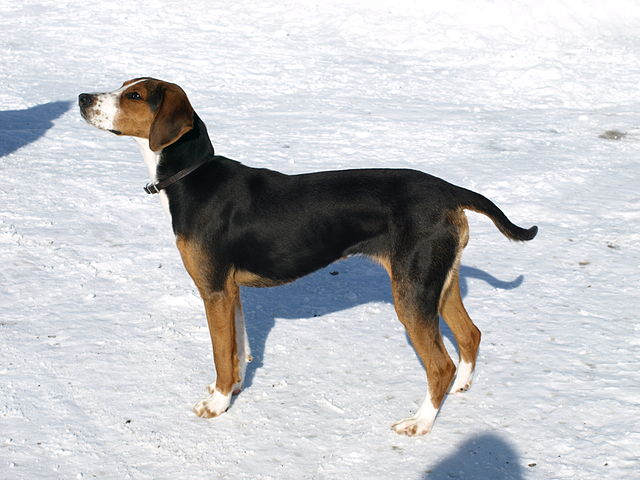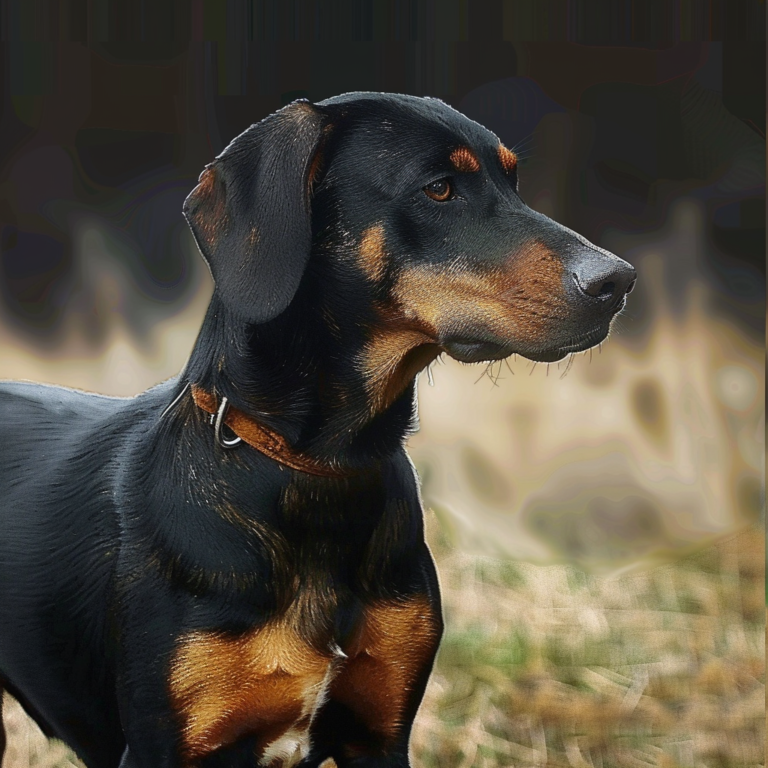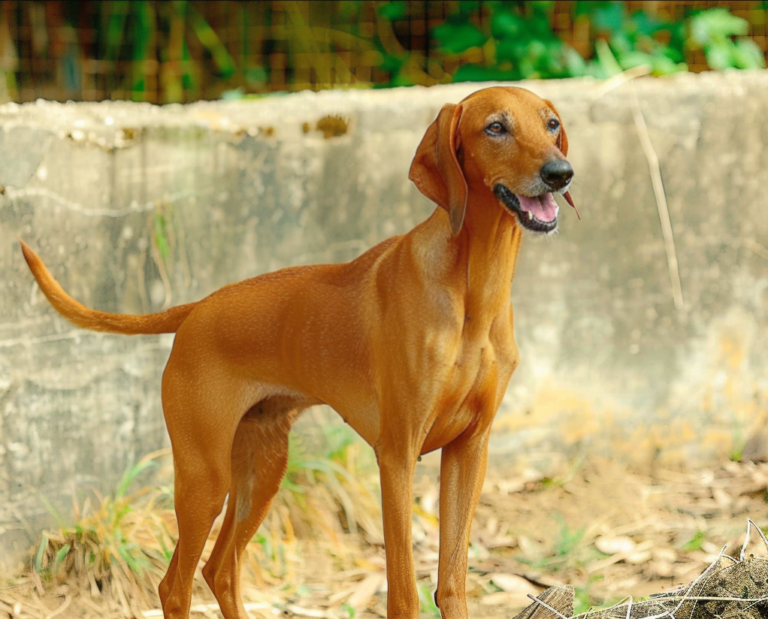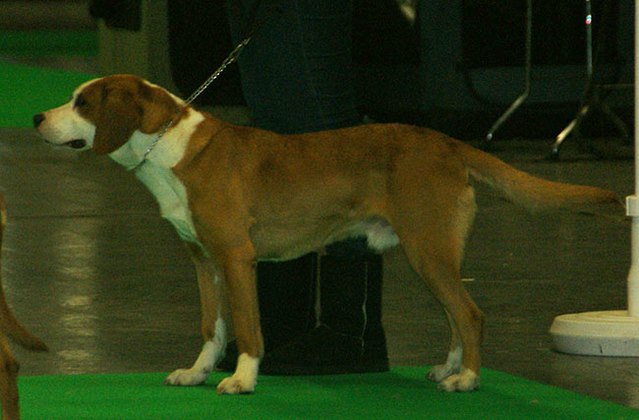The Finnish Hound’s first standard was drafted in 1932, and they have been recognized by the UKC since the 1990’s although are still a rare breed in the United States. In Finland, however, they are actually a very popular breed! They were developed from various Finnish breeds combined with European hounds to create a hunter that could work in Finnish-specific terrain (snowy and hilly). This scenthound has been traditionally used for hunting both fox and hare. They have an exceptional nose and are adept at tracking scents both airborne as well as on the ground. They hunt independently of the hunter, but will bark eagerly once they are engaged in a hunt to alert the hunter they are “on the track”.
Finnish Hounds are friendly and have relaxed temperaments – at least until they are engaged in a hunt! They are owned more often by hunters than the “pet community” as they have very high prey drives which can make ownership more difficult. Although they are more likely to be found with a hunter, it is not unheard of for them to be owned as pets. They have many great qualities as companions including their polite house manners, ease of traveling in cars, and obedient natures when trained. They get along well with children as well as other pets. This said, they may not be the best choice as a first dog for novice owners, as they can be extremely stubborn when they want to be. Also Finnish Hounds tend to bond very closely with their owners and can be prone to separation anxiety when left alone for long periods.
While most Finnish Hounds are healthy, there are a few afflictions that plague the breed. Skin problems, cerebellar ataxia (a disorder of the nervous system), cancer, and Factor VII Deficiency (a clotting disorder) are unfortunately in many lines. Furthermore, behaviorally it is somewhat common to find excessive shyness in the breed. This means that potential owners must do their due diligence when looking for a puppy, and must seek out reputable breeders who are honest about their dogs and expectations for litters. The average lifespan is 11-12 years.
The Finnish Hound resembles a large Beagle, or many of the various Foxhound and hare-hunting breeds that the general public may be more familiar with. The coat is smooth, yet dense and harsh to the touch. The always-tricolor coat is a double coat that sheds a medium amount. The chest is deep with a visible forechest. The body is slightly longer than tall and while somewhat muscular, is not overly boxy. This medium sized breed is easy to groom and care for, rarely requiring baths. A good brushdown once a week is usually sufficient to keep the coat shiny.
The Finnish Hound does require plenty of exercise as he was bred to hunt for hours at a time, on consecutive days, without tiring. This energetic hound needs daily walks combined with time to run free in a fenced area – at minimum. Best case scenario is one in which the dog is also taken hunting on a regular basis! It should be obvious, but in case it’s not… this is not a breed for someone living in an apartment.
The Finnish Hound should be introduced to obedience training early in his life. While he can take well to training, like most scenthounds he can quickly lose interest if met with a prey-like distraction! For most novice owners he can be difficult in general to train, being independent and generally more interested in hunting than following commands. He also requires an owner/trainer who is firm (yet fair) while maintaining house rules. This doesn’t mean the task is impossible however, just that owners should be prepared to be patient. Off-leash training in particular can be extra difficult for this wanderlust-y hound.




